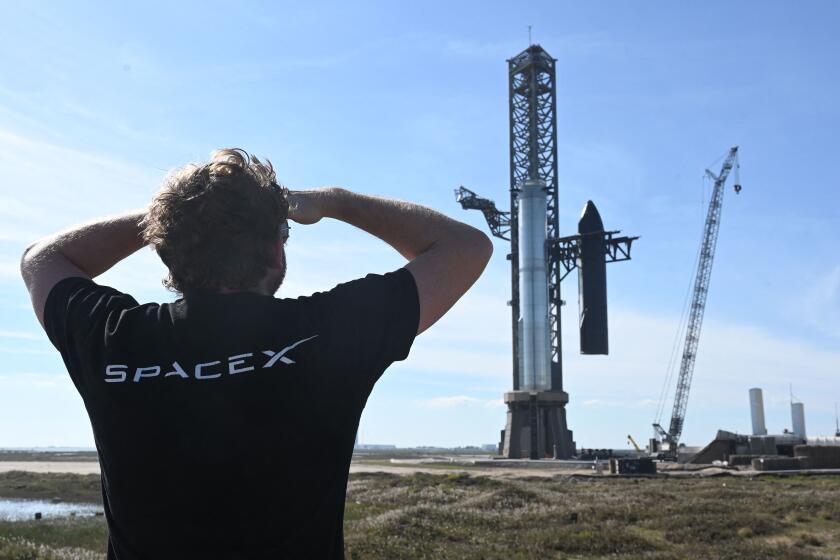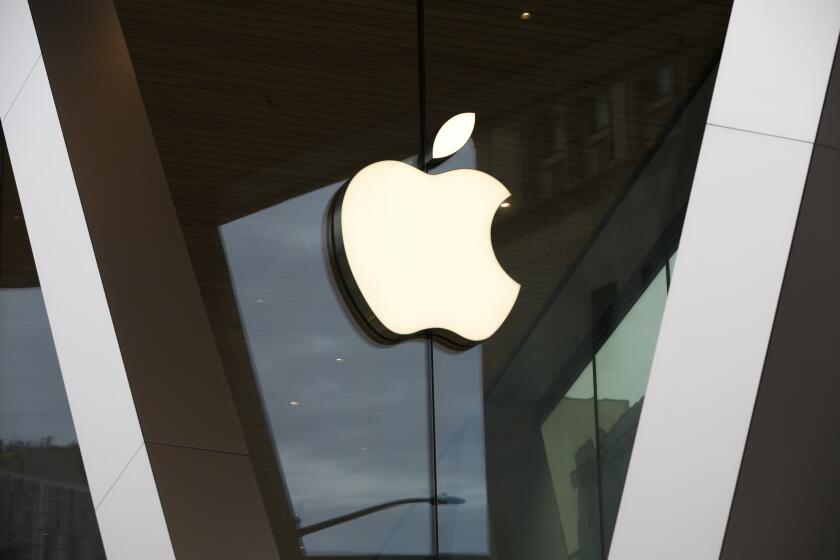Google Glass is back — but don’t look for it outside the workplace
- Share via
Google Glass is back, but this time the much-hyped, yet oft-ridiculed eyewear isn’t leaving the workplace.
On Tuesday, Google announced the launch of Glass Enterprise Edition, a second version of the augmented reality gadget intended for use in warehouses, hospitals and factories — where Glass has found some success despite its lackluster public reception.
Google pulled the plug on its Glass pilot program in 2015 amid concern that owners could use the device’s camera to record people without their knowledge. Yet the device remains in use in some workplaces where displaying information in an employee’s line of sight can help streamline tasks.
Jay Kothari, project lead of Google Glass, wrote in a blog post Tuesday that General Electric’s mechanics have improved their efficiency between 8% and 12% using Glass.
The new version, with an improved camera, battery and connections with other devices, is designed to be attached to glasses frames. That lets wearers choose frames — or safety goggles — that suit their face or profession, according to the Glass press website.
Costs vary based on a company’s level of software customization, customer support and training needs. Google declined to comment on specifics.
The Mountain View, Calif., company’s shift from a $1,700-gadget sold to individuals to a business tool sold to corporations is a savvy pivot, said J.P. Gownder, vice president and principal analyst at research firm Forrester.
Gownder said companies praise the technology — a stark contrast from the consumer criticism of a few years ago.
“They are really making clear that this is for the enterprise market and not consumers,” Gownder said. “Consumers, they really hated the privacy dimension of Google Glass a few years ago, they found that hard to deal with — this idea of people recording people at bars, walking down the street. But all that’s gone when it’s just used in the workplace all day.”
The public may be growing more at ease with face-mounted gadgets after the success of Snapchat maker Snap Inc.’s Spectacles — a pair of sunglasses with a camera in the hinge. The buzzed-about device faced little consumer backlash and as of Tuesday is available for purchase on Amazon, the Verge first reported.
But analysts say Google and Snap’s products are more different than they are alike.
“Spectacles’ use case is obviously focused primarily on hands-free sharing video with friends when it would otherwise be too cumbersome to do so with your phone — think GoPro scenarios,” said Michael Kim, chief executive at Kim Advisory Capital, who has consulted for Google and other clients on Google Glass. “Google Glass Enterprise, however, has a far broader set of valuable potential use cases like surgery, law enforcement, military, healthcare, sports, theme parks, even the theater.”
Kim doesn’t see Google trying again with a consumer market any time soon and said the business-to-business market will be “far more profitable for the foreseeable future.”
Google now has the potential to earn a large share of the immersive headset market, which is anticipated to reach $26.7 billion by 2020, said Stephanie Llamas, vice president of research and strategy at SuperData Research.






